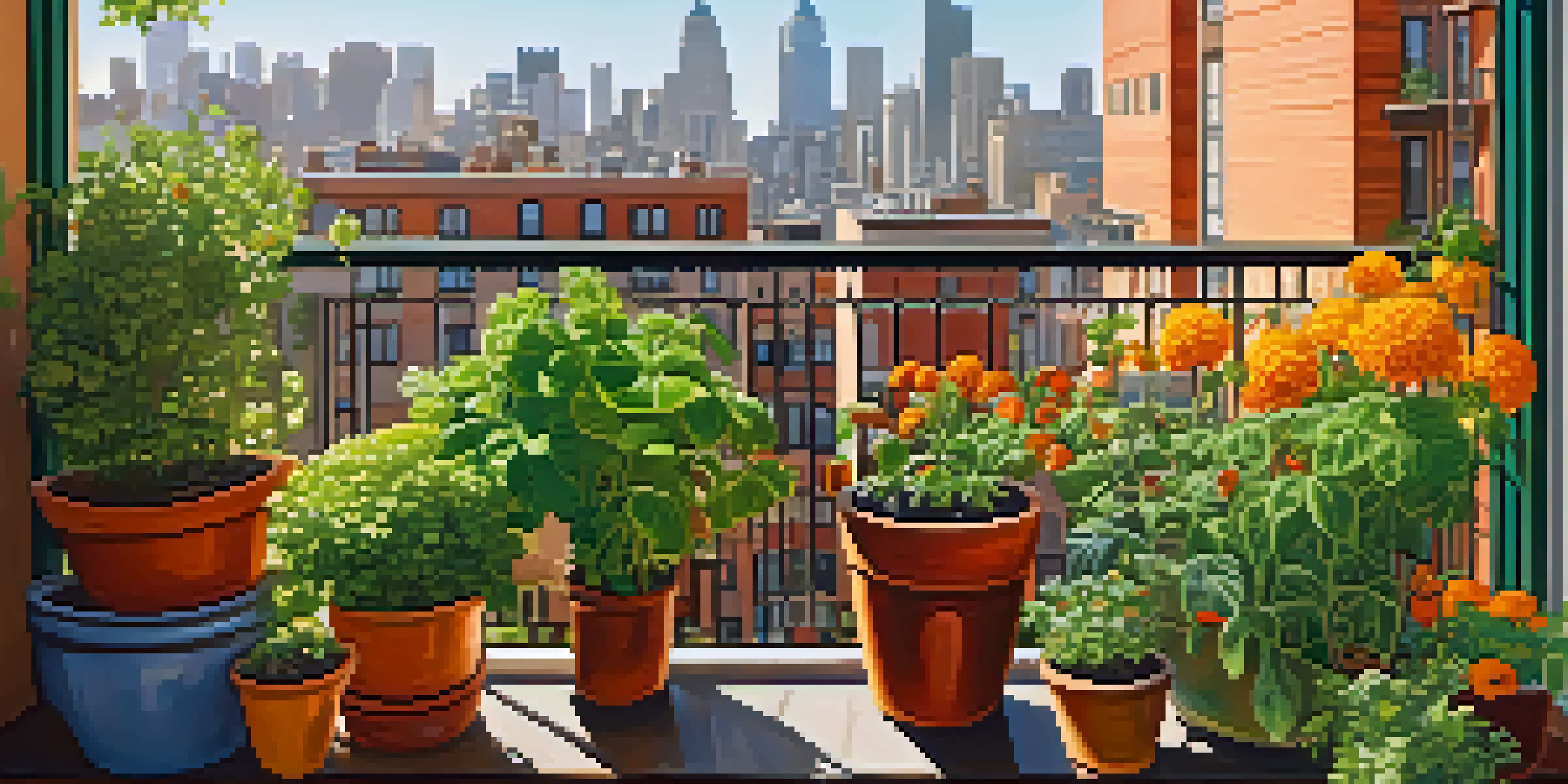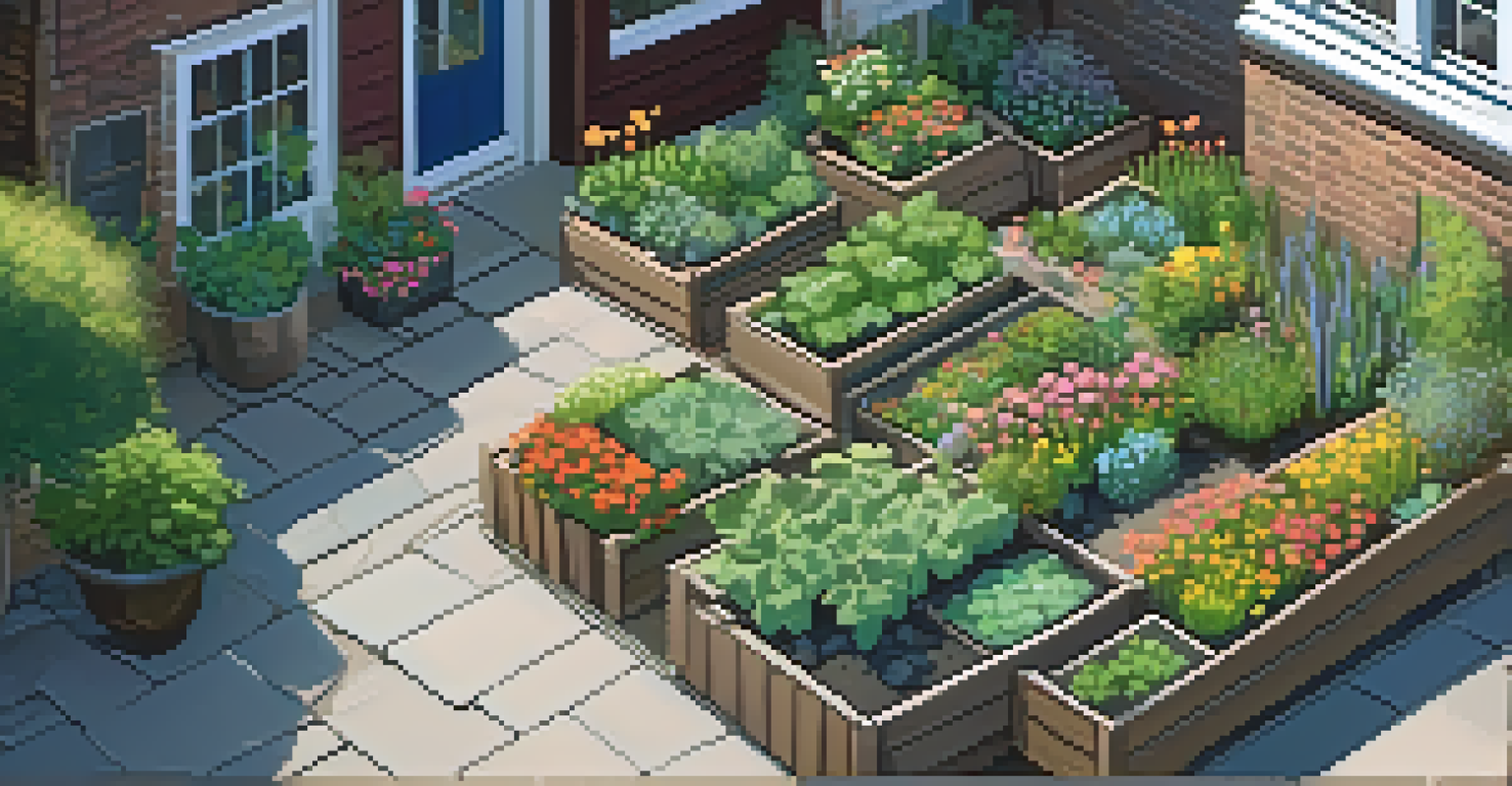How to Start Your Own Urban Garden in Limited Space

Why Urban Gardening is Perfect for Small Spaces
Urban gardening is a fantastic way to bring a bit of nature into your life, especially if you're short on space. It allows you to grow fresh herbs, vegetables, and flowers right outside your door, which can enhance your meals and your mood. Plus, it’s a great way to contribute to the environment by promoting biodiversity in concrete jungles.
Gardening adds years to your life and life to your years.
Even if you live in a tiny apartment or have a small balcony, you can still cultivate a vibrant garden. Urban gardening encourages creativity, as you'll need to think outside the box to maximize your limited space. From vertical gardens to container planting, there are numerous techniques that can fit into the smallest nooks and crannies.
So, whether you're a seasoned gardener or a complete beginner, the beauty of urban gardening is that it can be tailored to suit your lifestyle and available space. You don’t need a sprawling backyard to enjoy the benefits of gardening; all you need is a little enthusiasm and some basic knowledge.
Assessing Your Space for Gardening Opportunities
The first step in starting your urban garden is taking a good look at your available space. Assess how much sunlight your area receives, as most plants thrive in 6-8 hours of light per day. If your space is shaded, don’t fret—there are plenty of shade-loving plants that can flourish in lower light conditions.

Next, consider the amount of space you have. Is it a balcony, a windowsill, or perhaps a small yard? Each space has its own potential for gardening, whether through container gardens, raised beds, or hanging planters. Take measurements to ensure you can accommodate the plants you want to grow.
Urban Gardening Suits Small Spaces
With creative techniques like vertical gardening and container planting, anyone can grow fresh produce and flowers in limited areas.
Lastly, think about accessibility. You want your garden to be easily reachable for maintenance and harvesting, so avoid spaces that are awkward to get to. By carefully evaluating your space, you can make informed decisions about what and how to plant.
Choosing the Right Plants for Your Urban Garden
Selecting the right plants is key to a successful urban garden, especially in limited spaces. Consider opting for herbs, leafy greens, and compact vegetables, as they tend to grow well in smaller containers. For instance, basil, lettuce, and cherry tomatoes are all manageable and can yield a bountiful harvest.
To plant a garden is to believe in tomorrow.
Another option is to include flowers that attract pollinators, like bees and butterflies, which can help your vegetable plants thrive. Marigolds and nasturtiums not only add beauty to your garden but also serve a functional purpose in pest control. Mixing edible plants with ornamental ones can create a visually appealing and productive space.
Don’t forget about seasonal planting! Choose plants that can thrive in your local climate and consider staggering your planting times throughout the year. This way, you can enjoy fresh produce and blooms year-round, maximizing your gardening experience.
Understanding Container Gardening Basics
Container gardening is a great solution for urban spaces, allowing you to grow plants without a traditional garden bed. Start with good-quality pots that have drainage holes; this prevents overwatering, which can lead to root rot. You can use various containers, from terracotta pots to recycled items like old buckets or crates.
Next, consider the type of soil you use. A good potting mix is light and well-draining, providing the necessary nutrients your plants need to thrive. You can also enhance your soil with compost for added organic matter and nutrients, which will help your plants grow healthier.
Choose Plants Wisely for Success
Selecting compact vegetables and herbs, along with pollinator-attracting flowers, enhances both productivity and beauty in your urban garden.
Remember to group your containers based on their watering needs and sunlight requirements. By clustering together plants with similar needs, you can simplify your watering routine and ensure all your plants get the care they require.
Maximizing Vertical Space with Creative Solutions
When space is tight, vertical gardening offers an excellent way to maximize your urban garden. Consider using wall-mounted planters, trellises, or even repurposed wooden pallets to create a green wall. This not only saves space but also adds an artistic touch to your living space.
You can also hang pots from hooks or use tiered plant stands to create levels in your garden. This allows you to grow a variety of plants without taking up valuable floor space. Additionally, climbing plants like peas and cucumbers can be trained to grow upward, making them perfect candidates for vertical gardening.
Vertical gardening also improves air circulation and sunlight exposure for your plants, which can help prevent pests and diseases. By going vertical, you can cultivate a flourishing garden while making the most of your limited space.
Creating a Care Schedule for Your Urban Garden
A well-planned care schedule is crucial for maintaining a healthy urban garden. Start by setting aside specific days for watering, pruning, and fertilizing your plants. Consistency is key; watering on the same days each week can help ensure your plants receive the care they need.
Pay attention to your plants' individual needs, as some may require more frequent watering than others. Use tools like a calendar or gardening app to remind you of important tasks, and keep notes on what works best for each plant variety. This will help you refine your care routine over time.
Establish a Care Routine
A consistent care schedule tailored to your plants' needs ensures a thriving urban garden and maximizes your gardening experience.
Additionally, observe your plants regularly for signs of pests or diseases. Early detection can help you address issues before they become serious problems. By staying organized and attentive, you can foster a thriving urban garden that flourishes with your care.
Harvesting and Enjoying Your Urban Garden's Bounty
Once your plants start bearing fruit, it’s time to enjoy the rewards of your hard work! Regular harvesting encourages plants to produce more, so don’t hesitate to pick those ripe tomatoes or fragrant herbs. The more you harvest, the more your plants will thrive, creating a delightful cycle of growth.
In addition to enjoying fresh produce, consider sharing your bounty with friends and family. This not only spreads joy but can also inspire others to start their own urban gardens. Sharing your gardening experiences through social media or local community groups can foster a sense of camaraderie among fellow gardeners.

Lastly, don’t forget to experiment with cooking! Use your freshly harvested ingredients to create delicious meals, enhancing your culinary skills while celebrating the fruits of your labor. Urban gardening not only nourishes your body but also feeds your soul.